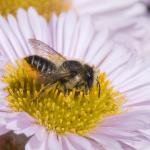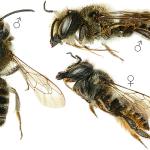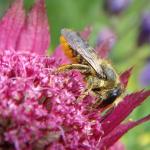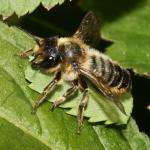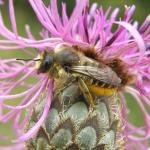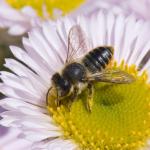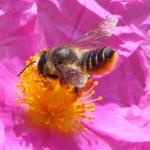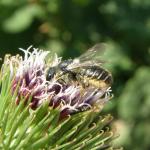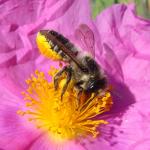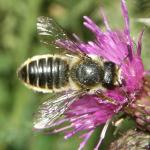Apis fastosus HARRIS 1776; Megachile parvula LEPELETIER 1841; Megachile infragilis CRESSON 1878; Megachile rufiventris SCHENCK 1851; Megachile appia NURSE 1903; Megachile leoni TITUS 1906;
An identification key is in Else (1999).
A widespread species in Britain, although it is more frequently recorded from the south. It also occurs in the east of Ireland and on the Channel Islands.
Widespread in western Europe, from Spain and Italy in the south north to Fennoscandia.
This species is not regarded as being scarce or threatened.
Gardens, both rural and urban provide suitable foraging for this species.
This species is found from mid-June through to mid-August with its peak in July.
The nests are generally constructed within large burrows in wood, cavities in old walls and also occasionally in soil. Megachile species construct nests from cut pieces of green leaf. Megachile centuncularis uses 6-14 circular leaf pieces per cell body with 6-7 discs forming the lid to each cell. Ash, birch, honeysuckle, horse-chestnut, lilac and rose leaves are utilised.
Like many other Megachile this species is often found at bramble and thistle flowers.
Coelioxys inermis (Kirby) is known to be a cleptoparasite of this species of leaf-cutter bee.
2012


